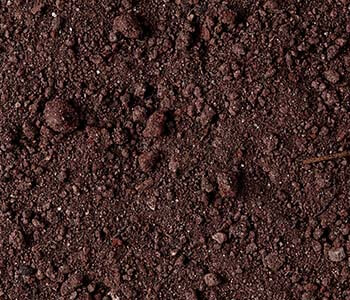WATERLOGGED SOIL LEADS TO CHALLENGES, BUT WE HAVE THE ANSWERS
Mar 17, 2020

This growing season we are presented with many challenges and opportunities. One challenge that should be on the front of our minds is soil health. We lived two years of over saturation and waterlogged conditions that have changed our soil chemistry and biology. Remember, soil is a diverse living organism within the bounds of its chemical properties.
Because of the over saturation, many soils have changed growth and fertility availability potential. As a result, soils have been lacking oxygen for long periods of time and the following changes may have occurred:
By having oxygen deprivation for long periods of time, we have killed off a lot of fungi and bacteria (microflora and fauna) that need oxygen to function. Fungi and bacteria play the following roles:
Oxidation
Cold, wet, deoxygenated soils have taken the soils’ chemistry to a different chemical state. As the soils come back to life with sunlight and springtime temperatures, it will oxidize as water recedes. What does this mean?
Visit with your local Agtegra Agronomist on how to plan to minimize these negative factors and maximize the new flushes of nutrients to allow for maximum success this year.
Tilth
With the soil profile being saturated all winter, it either allowed for a deep freeze where there wasn’t much snow cover or where there was snow cover, it didn’t freeze deep, if at all. Both situations drastically affect soil tilth either by loosening or compacting more depending where the soil didn’t freeze as much due to the weight of the surface cover.
For every inch of water or snowpack equivalent to an inch of water adds roughly a quarter million pounds per acre. So, the wide new lake beds covering a lot of acres with a foot of water had roughly three million pounds per acre compressing highly lubricated clays making brick layers somewhere in the depth of the soil profile.
Again, contact your Agtegra Agronomist on how to take advantage of better tilth, nutrient availability, or how to minimize the negative effects of too much saturation.
Because of the over saturation, many soils have changed growth and fertility availability potential. As a result, soils have been lacking oxygen for long periods of time and the following changes may have occurred:
- Microorganisms
- Oxidation
- Tilth
By having oxygen deprivation for long periods of time, we have killed off a lot of fungi and bacteria (microflora and fauna) that need oxygen to function. Fungi and bacteria play the following roles:
- Increase mineralization
- Root colonization and feeding (i.e. mycorrhizae and Bradyrhizobia)
- Impact clay mineral nutrient adsorption and desorption into soil solution
- Release nutrients at the end of their life cycle, timing it with the crop’s uptake periods
Oxidation
Cold, wet, deoxygenated soils have taken the soils’ chemistry to a different chemical state. As the soils come back to life with sunlight and springtime temperatures, it will oxidize as water recedes. What does this mean?
- Ground is in flux. Soil test levels, like Phosphorus, may be slightly erratic.
- Nitrogen is flushed from the root zone as a mass flow of water will move nutrients from the soil profile.
Visit with your local Agtegra Agronomist on how to plan to minimize these negative factors and maximize the new flushes of nutrients to allow for maximum success this year.
Tilth
With the soil profile being saturated all winter, it either allowed for a deep freeze where there wasn’t much snow cover or where there was snow cover, it didn’t freeze deep, if at all. Both situations drastically affect soil tilth either by loosening or compacting more depending where the soil didn’t freeze as much due to the weight of the surface cover.
For every inch of water or snowpack equivalent to an inch of water adds roughly a quarter million pounds per acre. So, the wide new lake beds covering a lot of acres with a foot of water had roughly three million pounds per acre compressing highly lubricated clays making brick layers somewhere in the depth of the soil profile.
Again, contact your Agtegra Agronomist on how to take advantage of better tilth, nutrient availability, or how to minimize the negative effects of too much saturation.